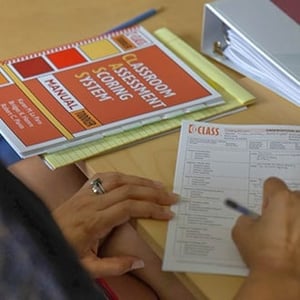
I recently heard from a trainee who had attended two different Observation Trainings and heard conflicting information related to scoring the indicator of transitions under Productivity. His first trainer stated that, if a transition does not take place during an observation cycle, then the indicator should be disregarded. The second trainer indicated that if a transition is not observed that the indicator should be scored in the low range. So, which is correct?
It’s easy to see why the second trainer thought that the indicator should be scored in the low range if it wasn’t present—after all, that is pretty much the way we conduct CLASS scoring. If an indicator isn’t observed, it is rated in the low range. However, there are some exceptions to this general protocol and the indicator of transitions in Productivity is one of these exceptions.
Recall that the dimension of Productivity measures how well the teacher manages children’s time in the classroom. If all of the indicators for Productivity are present at the high range, the classroom can score in the high range for Productivity without a transition, because not seeing a transition does not detract from the management of time.
Might it be a problem that we don’t see a transition? It’s certainly possible. Twenty minutes is a long time in the world of a 4-year-old. If the teacher has the children sitting in circle for a full 20 minutes, we may wish that she would build in a transition, but the CLASS measures what we see—not what we would like to see. If children have to sit for 20 minutes, we may very see them get fidgety and start to lose attention, which we would pick up under student engagement in Instructional Learning Formats. How the teacher manages this lack of engagement may be coded under Behavior Management. But the absence of a transition does not lead to a lower score for Productivity.
When you consider Productivity, bear in mind that we can also score smaller, "within activity" transitions. If the children are sitting at circle and the teacher leads them though a whole series of separate activities (e.g., The Pledge of Allegiance, morning greeting, calendar, a song, and a book), we can look at each of these activities as a "within group" transition, even though the children do not physically move from one setting to another.
Similarly, we can look at individual child transitions when coding Productivity. We may observe center time and note how children move from one area to another. Do they clean up their blocks, get their nametag, move it to the next area and quickly get to work? Yes? Not only are they showing a good understanding of classroom routines, but they are also transitioning smoothly and efficiently from one activity to another. The key to thinking about individual child transitions is to note how many children made transitions and how well those transitions went.

